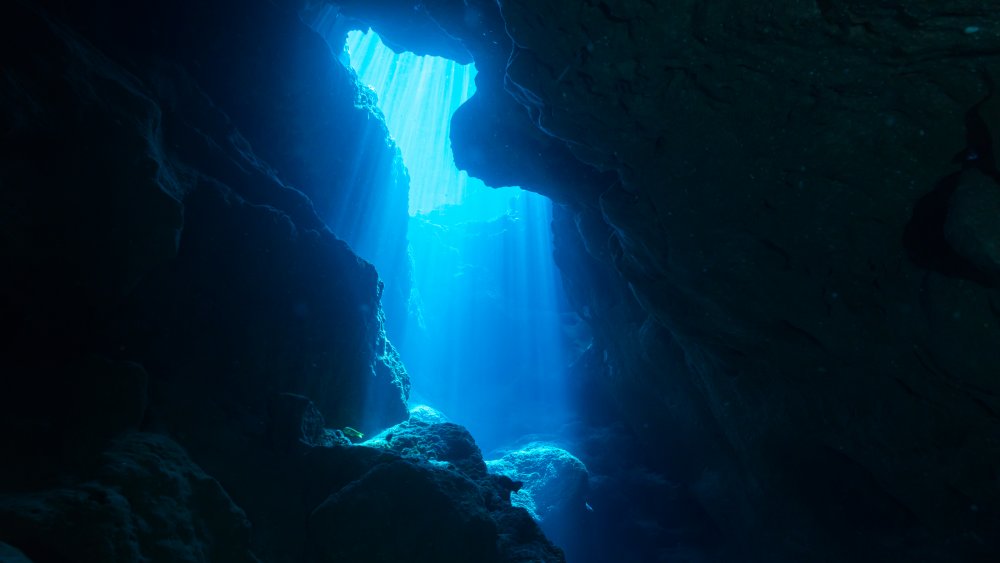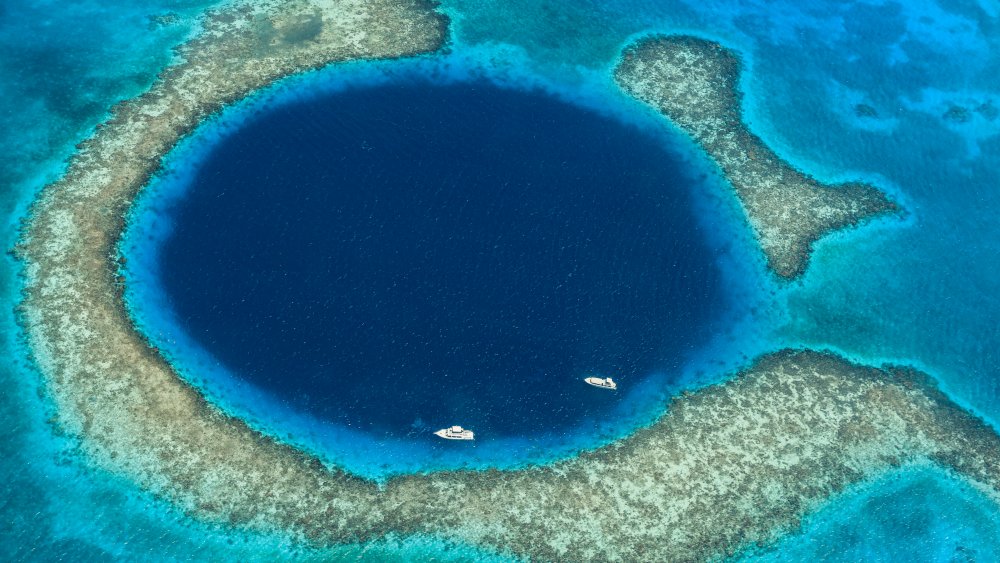Why This Ocean Sink Hole Is So Important To Scientists
"Blue holes" is a term that scientists use for sinkholes on the ocean floor. And later this year, the National Oceanic and Atmospheric Administration, alongside the Mote Marine Laboratory and Aquarium, will continue their collaborative exploration of these holes, by sending a "benthic lander" — a collection of scientific equipment, weighing over 600 pounds, into the Green Banana, a blue hole located fifty miles off the coast of Sarasota, Florida.
The scientific allure of this exploration, as the NOAA explains under their section "Why Study Blue Holes," is that "the seawater chemistry in the holes is unique and appears to interact with groundwater and possibly aquifer layers." The exploratory allure is that scientists haven't fully examined these spaces before, because the openings tend to be too narrow for automated subs: "In fact, the first reports of blue holes... actually came from fishermen and recreational divers."
The first collaboration between the NOAA and Mote was back in May 2019, when they explored the smaller Amberjack Hole, which is also near Sarasota. In the 2019-2020 Winter issue of Mote Magazine, the team laid out their findings: "The most interesting thing is that we saw nutrient flux from the bottom sediment into the water." This means that the blue holes participate in a cycle, fueling the nutrient production above the hole, thus feeding larger organisms in turn, and receiving some carbon and nutrients back into their sediments, which restarts the cycle. It's like finding a new world.
Aliens of the deep
Of course, the lifeforms that go with these ocean oases drives interest, as well. During the Amberjack exploration, Jim Culter, Mote's Benthic Ecology Program Manager and blue hole pioneer, reported that "[around] the rims we can see endangered and threatened species like sea turtles, and various species of sharks and other fishes." Most notably, they found the preserved corpses of two sawfish, an endangered species of rays.
While discovering the possibility that endangered species are surviving at the borders of inhospitable areas is exciting, the other — and perhaps more exciting — area of discovery involves other types of life, ala invisible, earth-based "aliens." In a 2012 National Geographic article, astrobiologist Kevin Hand explained why the news of sulphur-consuming microbes professionally interested him: "My ears always perk up when I hear about sulfur-based ecosystems and microbes in extreme environments... It's through our study of life's extremes on Earth that we can extend our understanding of habitable environments off Earth." Because these blue holes occur so far away from the hurly-burly of normally-evolved life, the rich ecosystem that still develops around them works with an essentially alien logic. Looking ahead to 2020, the NASA scientist hopes that they could get a mission launched to Europa, one of Jupiter's moons, to attempt to find similar life there.
However, here in 2020, one should simply look forward to the chance to fully explore the final frontier on this planet: the depths of the blue hole.

